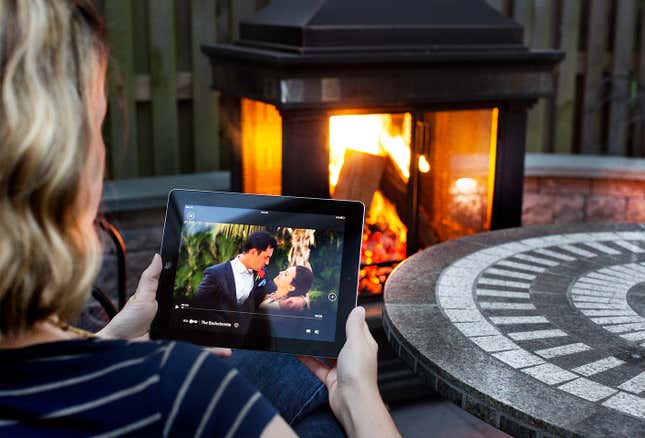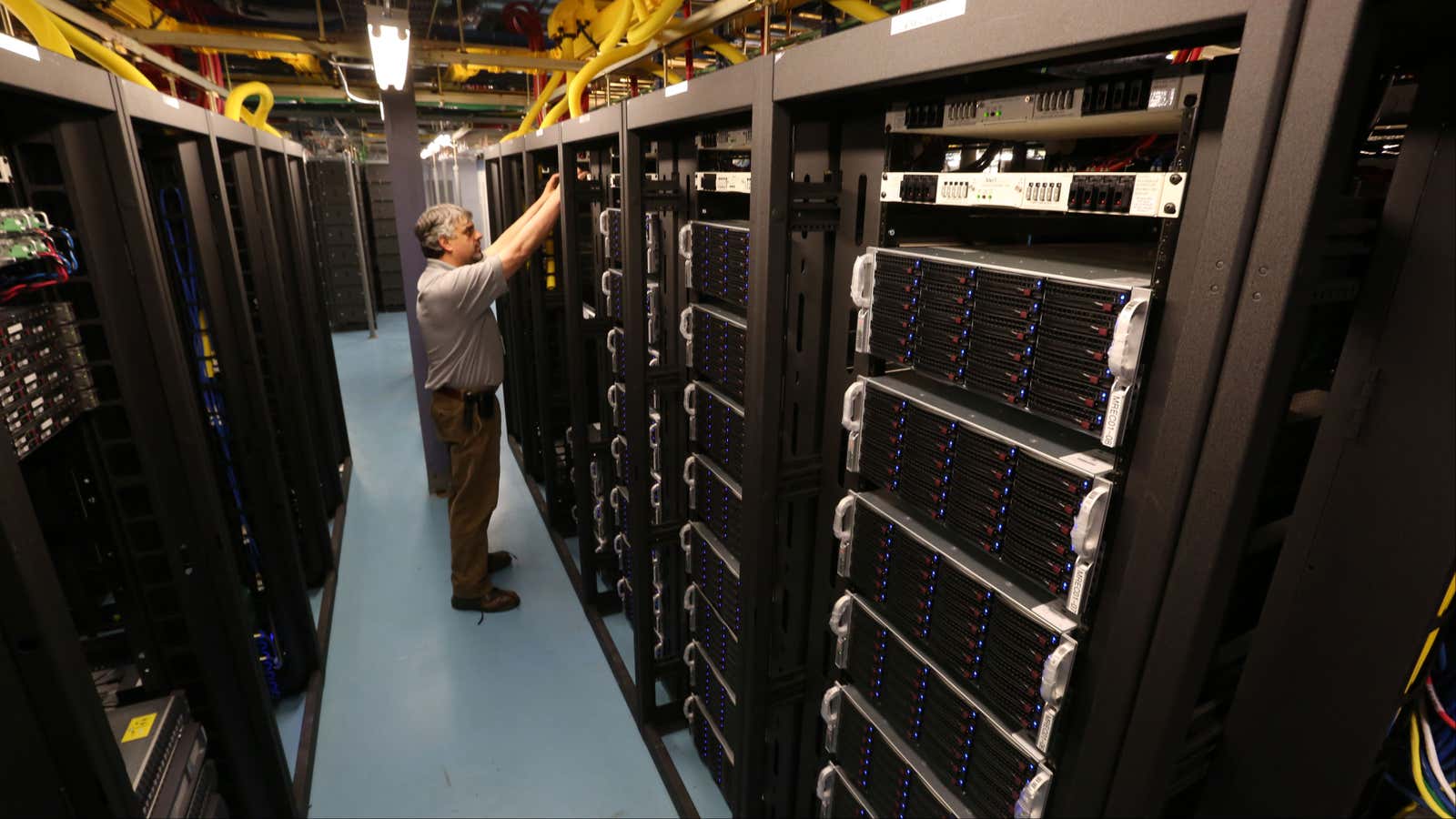It’s perfectly legal in the US to record television programs for personal use, but the situation gets murkier when those recordings touch the web. American courts haven’t really decided if cloud DVRs, which store and play back TV shows over the internet, are just as acceptable as regular DVRs with hard drives, or instead violate copyright law. The US Supreme Court this year said a ruling on the legality of cloud DVRs would have to wait for another day.
That day could come soon.
Comcast, the biggest television and internet provider in the US, announced this week that its cloud DVR service has a key new feature: In many parts of the country, Comcast customers can now stream or download their recordings over any internet connection, wherever they are. Previously, downloads were limited to in-home connections managed by Comcast.
The distinction is important to lawyers, perhaps more than it is to customers. Comcast is confident in the legality of its product, but the programmers from which Comcast licenses content may not agree. They have a long history of suing to prevent technology that allows people to record television and play it back later, going back to VCRs.
“We comply with all the copyright laws that are associated with DVRs,” Matt Strauss, who is in charge of Comcast’s video business, told me last week while showing off the company’s X1 cable box. The new features rolled out this week to customers in San Francisco and now reach more than half of Comcast’s coverage area.
From VHS to the cloud
The potential legal issue is that Comcast’s contracts with programmers don’t include a separate license to stream TV shows over the internet. But that’s exactly what a cloud DVR does. The question is whether streaming recordings of TV over the internet is a “fair use” of content Comcast and its customers have already licensed. To stay within the bounds of copyright law, Comcast actually makes a separate copy of each recording for each customer and stores it in the cloud, which is not exactly efficient.
You might think the matter was settled in 1984, when the Supreme Court ruled that “private, noncommercial time-shifting” was perfectly acceptable. (The justices, it should be noted, almost went the other way.) That decision, known as the Betamax case, was used to justify the legality of DVRs when they emerged more than a decade later.
But the question arose again in 2006, when Cablevision, a television provider, began offering DVR service that stored the recordings in the cloud rather than on the machine’s hard drive. An appeals court based in New York City ruled in 2008 that it was a distinction without a difference, but the case didn’t make it all the way to the Supreme Court.
That has meant cloud DVRs are considered legal in New York, Connecticut, and Vermont, but their status isn’t clear in the rest of the country. As a result, the TV industry has been slow to adopt cloud technology in the US. Cablevision has offered cloud DVRs to most of its customers, but competitors largely haven’t followed suit.
The Aereo exception
Earlier this year, the Supreme Court dealt with a case that touched on similar issues: Aereo, a startup based in New York to take advantage of the previous appeals court ruling, was transmitting free broadcast television signals to people over the internet. It argued that the service amounted to a cloud DVR attached to an antenna, both of which are seemingly legal. The justices nevertheless ruled against Aereo, calling it a “public performance” of copyrighted work, which is prohibited by law.
That seemed to contrast with the appeals court’s Cablevision ruling, which said cloud DVRs don’t perform publicly—a decision that makes perfect sense to any average person trying to define the words “performance” and “public,” but raised eyebrows among lawyers familiar with the intricacies of US copyright law. Some of them feel that, while cloud DVRs probably should be legal, the Cablevision decision contorted itself to justify that conclusion. There are whole panel discussions on the topic!
So was the Supreme Court rebuking that ruling when it deemed Aereo illegal? Not technically. And the justices specifically said they weren’t taking a stand on cloud DVRs. But their reasoning raised enough questions that any lawyer would be concerned. Many I’ve spoken with since the Aereo ruling say they would advise Comcast, Cablevision, and other television providers to seek explicit rights to stream shows over the internet. Otherwise those companies risk a court battle that could end in a large settlement.
Cable TV vs. internet TV
The problem is programmers haven’t all been forthcoming with those rights. For cable companies, streaming television to tablets and phones within a customer’s home is considered OK because the content doesn’t travel over the “open internet,” in the words of cable executives. It’s a fine distinction, but one that appears to have programmers’ blessing. One widely praised feature of Comcast’s X1 cable service allows customers to watch live television on any device within their homes.

Streaming outside the home is trickier because the content has to travel over the internet. It really shouldn’t make a difference, but it does. Access to so-called “TV Everywhere” is governed entirely by the choice of individual companies to make their programming available to TV subscribers over the internet or not. Many have objected or insisted on limits, hoping to extract additional payment from the same TV providers or new competitors—or in time, from customers themselves.
Recordings streamed over the internet may or may not be included in this category. The question becomes whether cloud DVRs are merely a technologically advanced way to do exactly what the Supreme Court said was fine to do with Betamax VCRs three decades ago. Or do they constitute a new performance of copyrighted work to the public?
“Sow confusion for years to come”
Justice Antonin Scalia, who dissented from the Aereo decision this year, warned that it would “sow confusion for years to come” because the court established a vague standard having to do with Aereo’s similarity to a cable company. “The Court vows that its ruling will not affect cloud storage providers and cable-television systems,” Scalia wrote (pdf, p. 33), “but it cannot deliver on that promise.” His view was that, by the letter of US copyright law, Aereo wasn’t performing at all.
In the majority opinion, Stephen Breyer hinted at ways in which a service like Comcast’s cloud DVR might differ from Aereo. There is, of course, the fact that Comcast pays for the programming it delivers to customers. (Aereo didn’t.) Without naming names, Breyer suggested cloud DVRs could have similarities to how “a valet parking attendant returns cars to their drivers.” It may also matter that DVR viewing isn’t live, like the bulk of Aereo’s service, though the US Copyright Act of 1976 specifically says a public performance can be received “in the same place or in separate places and at the same time or at different times.”
This line in Breyer’s opinion must give Comcast some comfort:
In other cases involving different kinds of service or technology providers, a user’s involvement in the operation of the provider’s equipment and selection of the content transmitted may well bear on whether the provider performs within the meaning of the Act.
It “may well”! Indeed, it should. But as the nation’s biggest cable company rolls out these features to all of its customers—and, perhaps soon, all of Time Warner Cable’s customers, as well—a legal showdown on this question seems inevitable. Comcast believes its interests are aligned with programmers. That may be, but with the industry in flux, that could also change in an instant.
